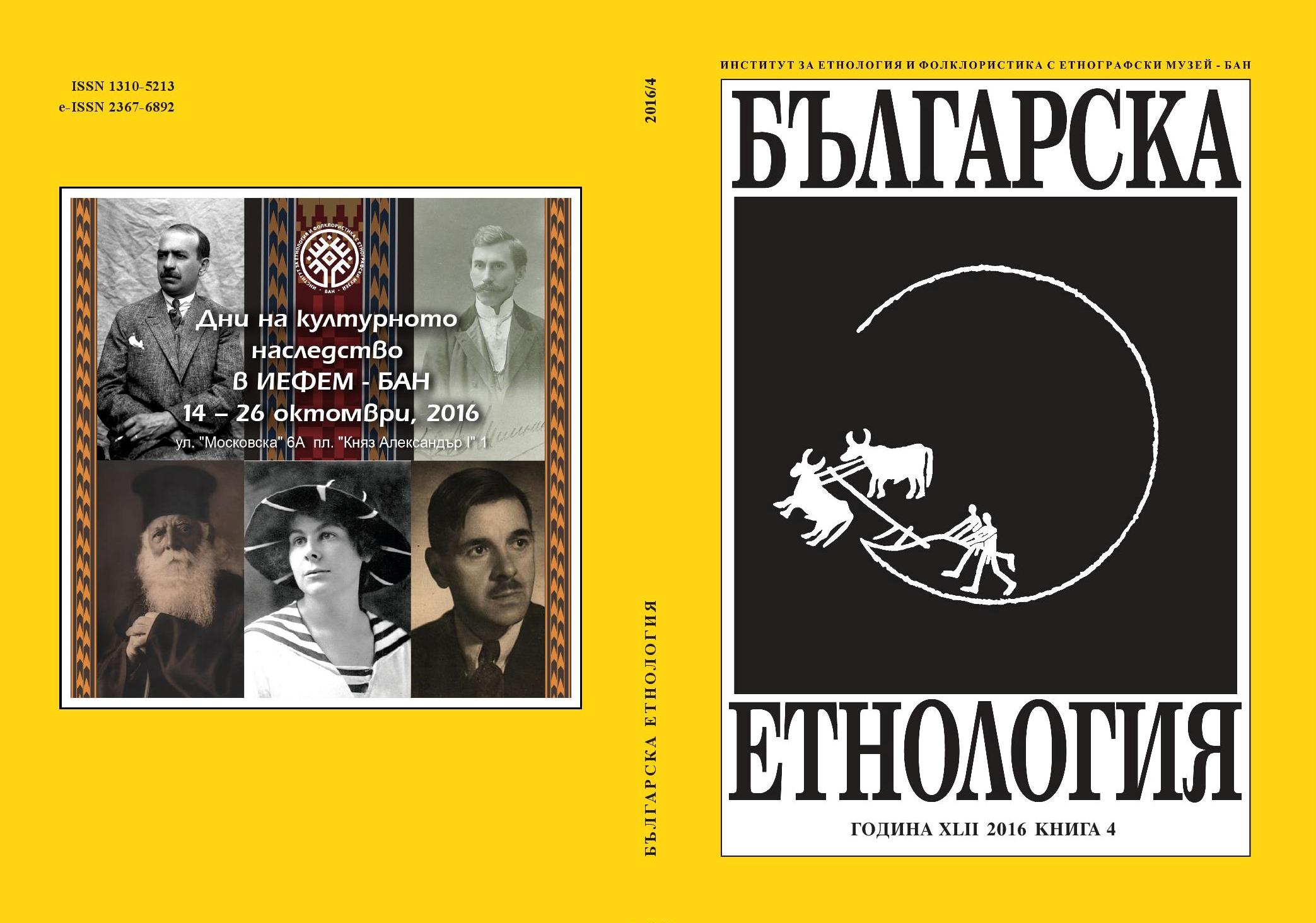
We kindly inform you that, as long as the subject affiliation of our 300.000+ articles is in progress, you might get unsufficient or no results on your third level or second level search. In this case, please broaden your search criteria.

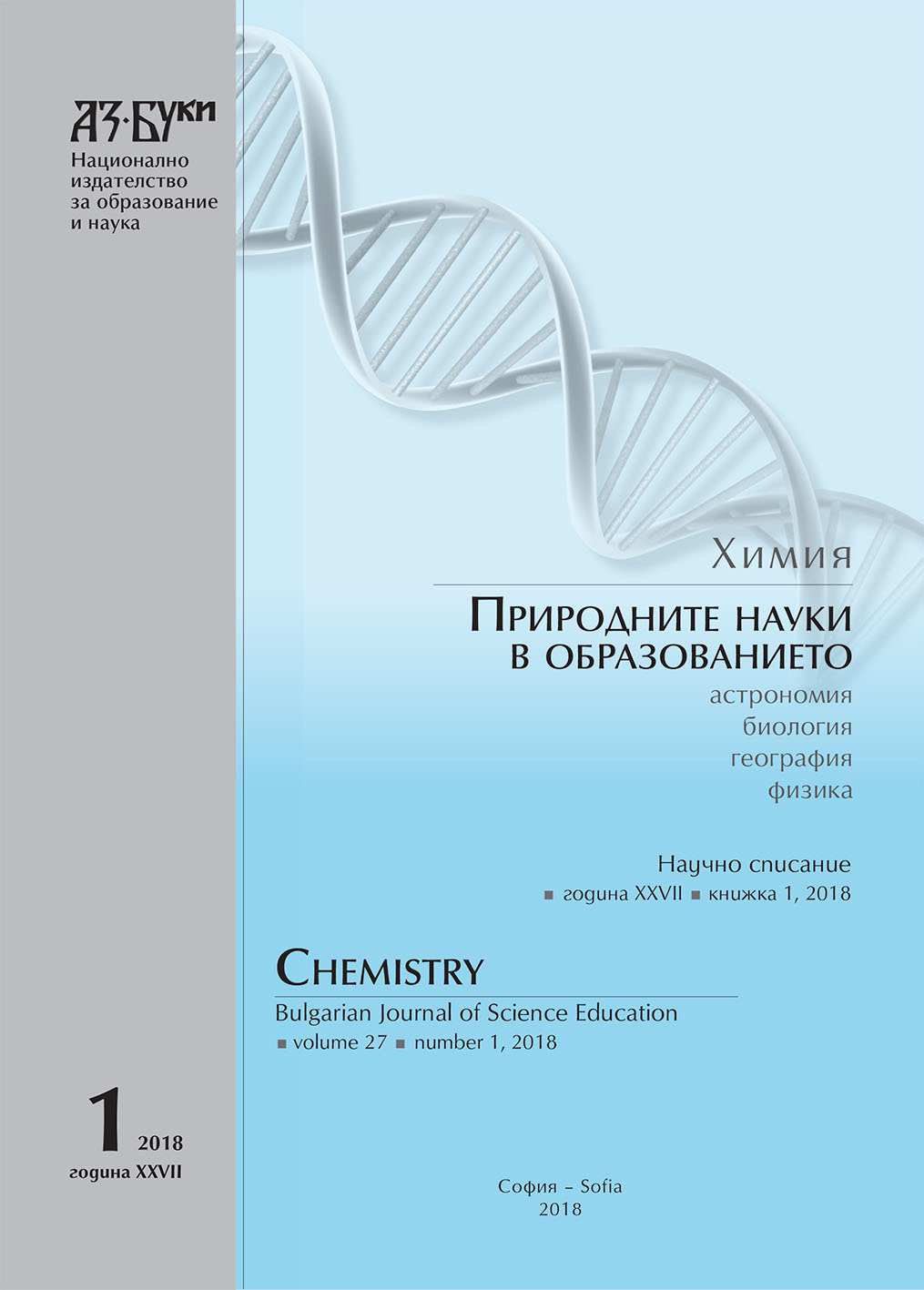
The study is devoted to the problem of organization and realization of professional education of students – future biology teachers, for formation their methodological skills for work with interactive methods of education with the school pupils. There has been presented fragments of the methodological structure of the lessons to the students. The analysis of the results of the study enables us to draw the conclusion that the presented lessons seem to be successful.
More...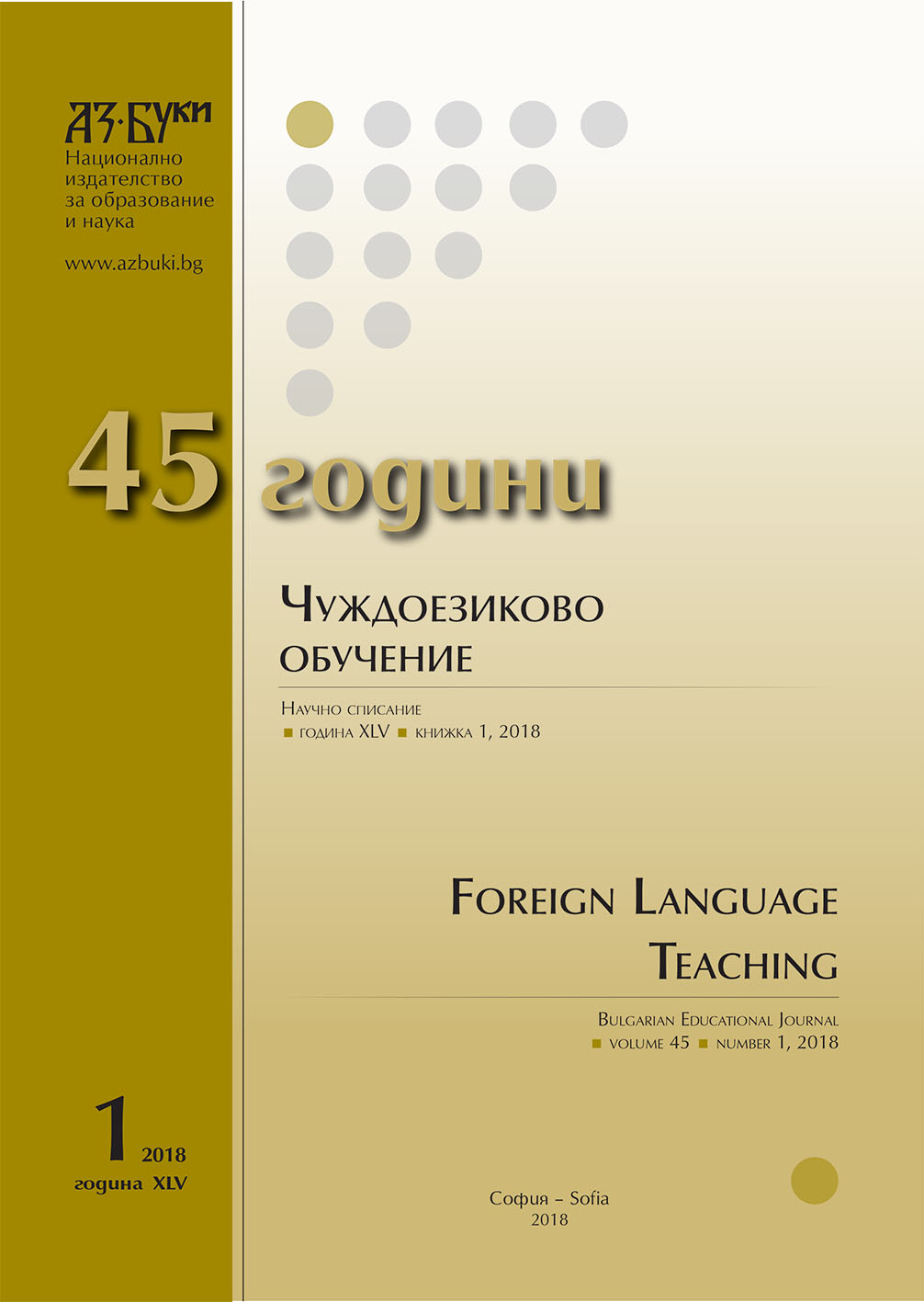
The current article makes a first attempt to introduce a more detailed presentation of the classical suggestopedia as developed by prof. Lozanov and collaborators from the point of view of foreign language teaching. It deals with basic concepts like suggestion-desuggestion, antisuggestive barriers and means of suggestion. It also focuses on the analysis of the basic principles of suggestopedia and their interpretation in the context of language education. The suggestopedic concepts under review are related to important terms such as language acquisition and language learning, active and passive, text-based and discreet item-based language learning. Finally, the article discusses the Bulgarian contribution of suggestopedia as a holistic method to foreign language teaching and personality development.
More...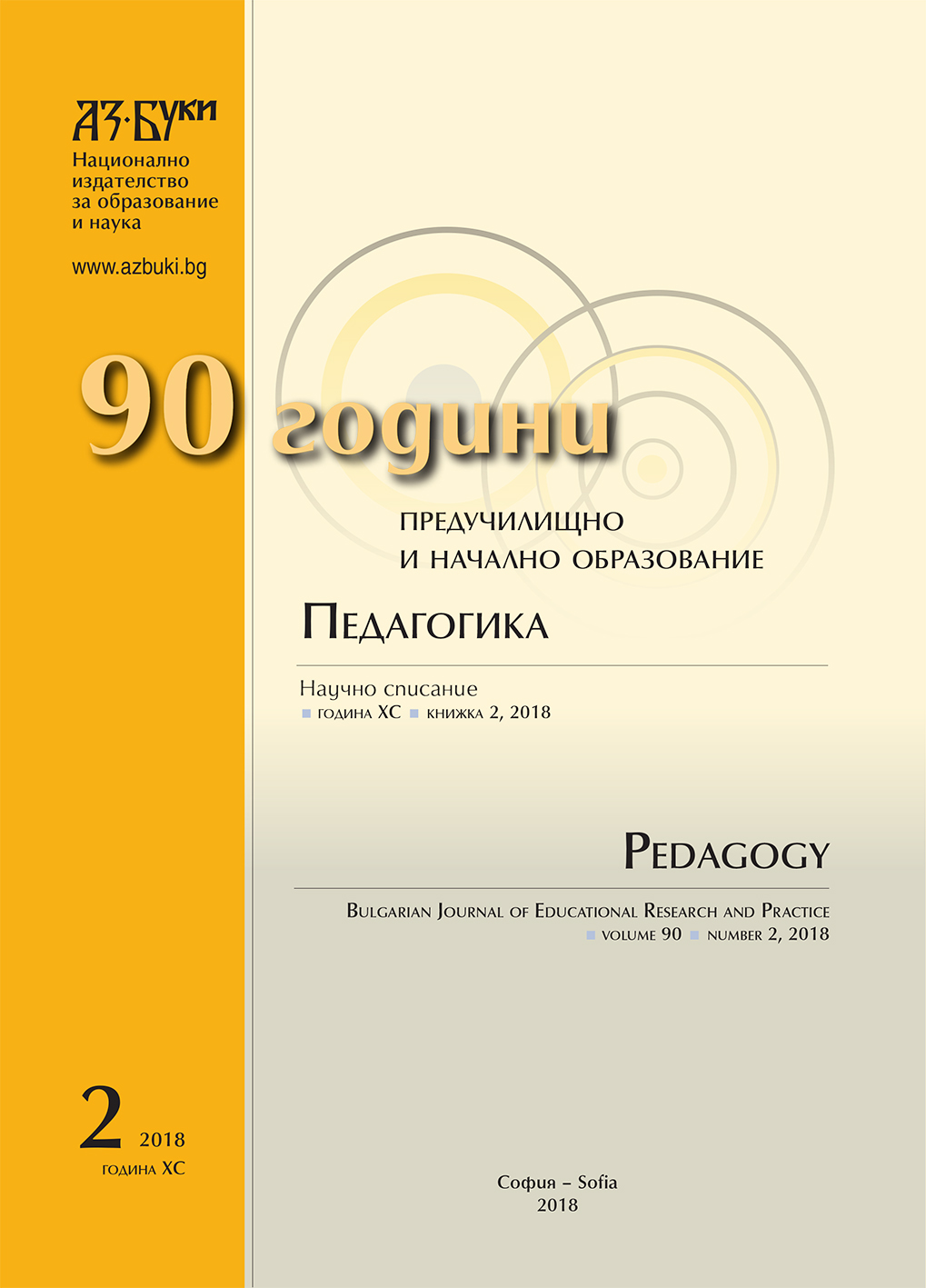
This article deals with the issues directly or indirectly connected to educating a child in a modern family. Some ethical issues are being discussed related to widely applied activities within the public space such as ones in the social media, intervention in fertility health treatments, pedagogical practices in nurseries and kindergartens accompanied by the author’s comments altogether with their long-term consequences on the most important individual amongst them – the child.
More...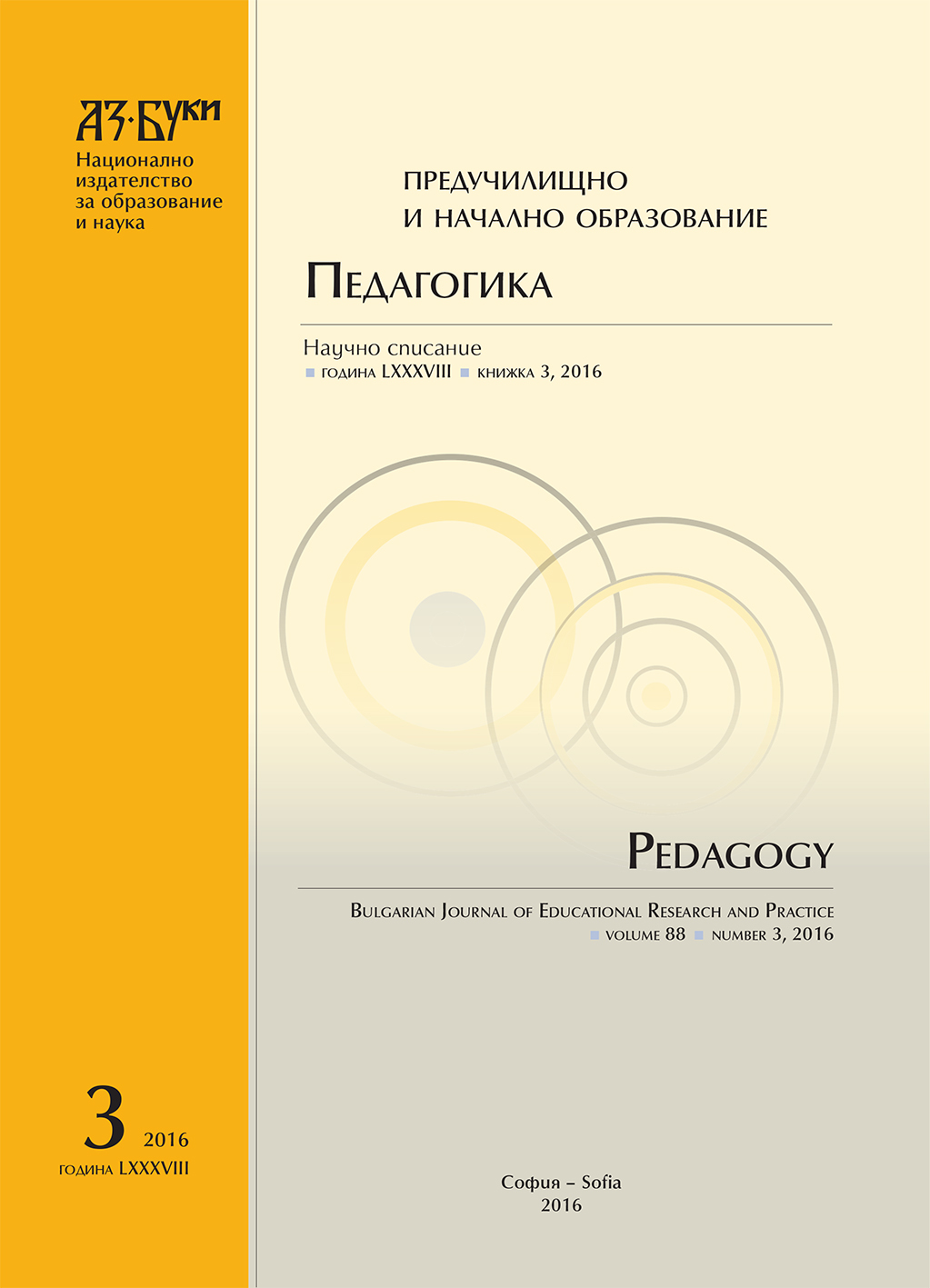
The paper explores the strategies applied in teaching reading skills to pupils with the dyslexia. It starts with an analysis of some of the most influential theories of reading development in languages with an alphabetic orthography and the implications they have for teaching reading skills. Next, it identifies the areas of reading acquisition that are most frequently affected in dyslexia, acknowledging the complex and inhomogeneous nature of this specific learning difficulty. Drawing on research on reading interventions, the paper discusses the focus given to structured phonics presented in a rich language environment. It suggests that comprehension developing activities alongside the development of phonological skills should not be underestimated. Additional principles guiding instruction are identified and discussed – multisensory teaching, the role of context, mixed-ability grouping, reinforcement, overlearning and metacognition. Taking into account the variations of each learner’s profile, the author concludes that accommodating the reading instruction to meet each student’s individual needs is what teachers should aim at in order to secure the most inclusive learning environment.
More...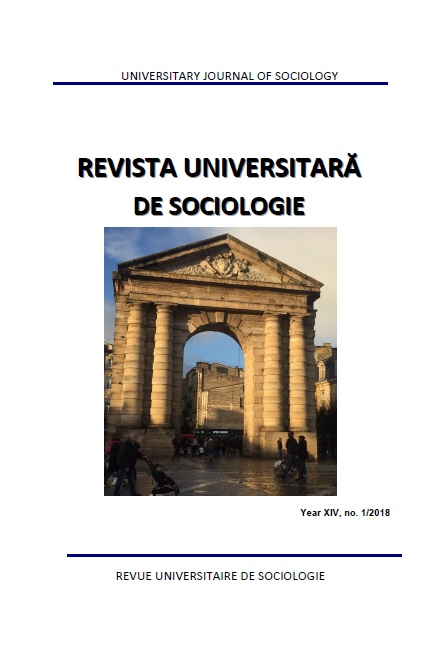
This article seeks to outline the polemics on the relationship between language and dialect and between language and social inter-action, and to present, in an analytical, synthetic and comprehensive manner, some theoretical models that provide explanatory patterns regarding the way in which language, as the basis of culture, is influencing how we relate to objective reality. First we will make a conceptual distinction on the relationship between dialect and language, we will review the philosophical premises of the issues addressed, after which the emphasis will move on the analysis of the language from four distinct paradigmatic positions: evolutionary, relativist, interactionist and constructivist.
More...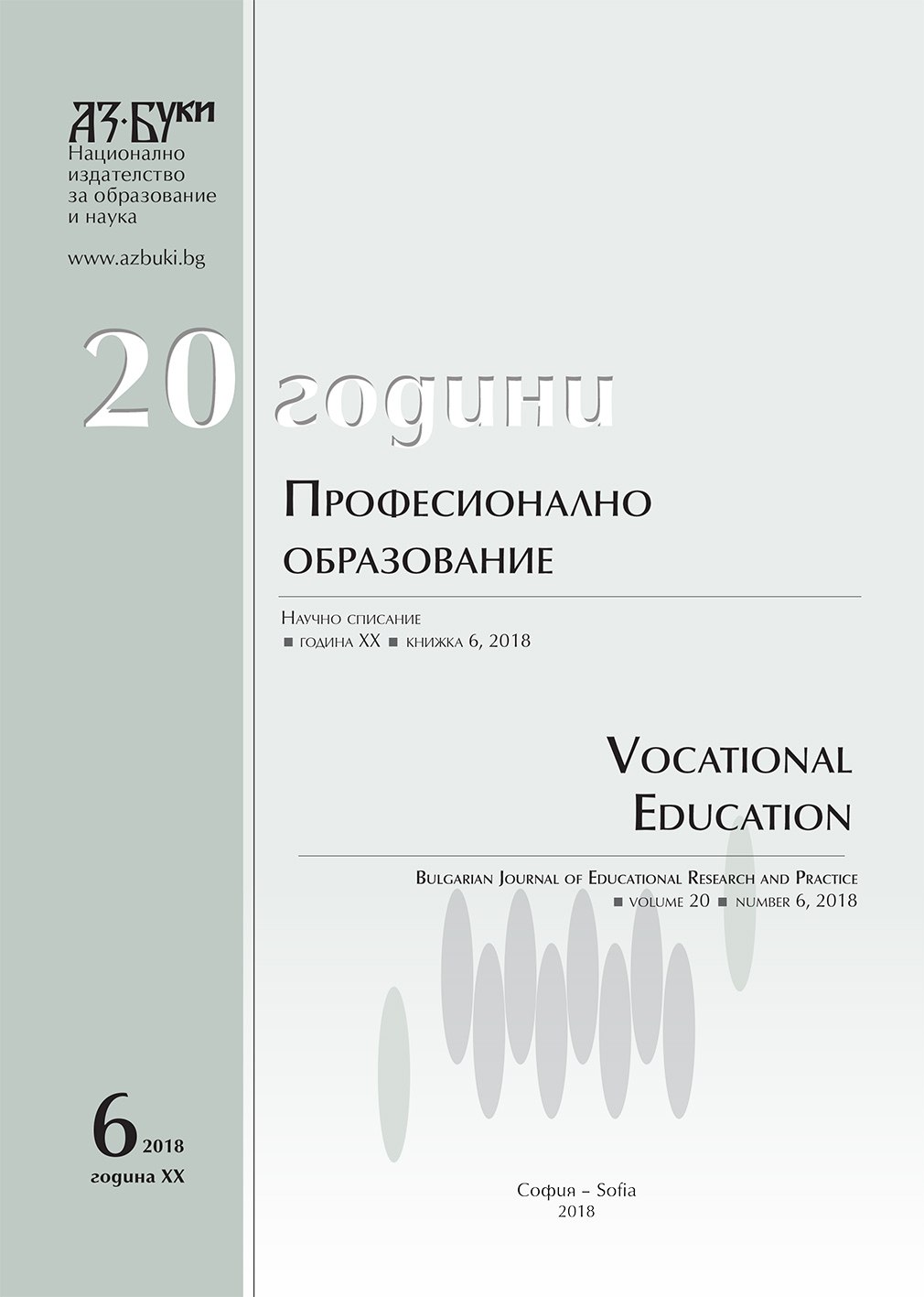
Contemporary human beings are a solid, sometimes ambivalent, combination of constructive and destructive powers. Building something new is an inevitable necessity, a useful experience and gives an essential meaning in life. The destruction is a dangerous phenomenon that undoubtedly brings some kind of loss – identity, conception of the world, self-knowledge and adequate evaluation, etc. The anatomy of human destruction is a complex system of pathologies. It focuses on the darkest, unsuspected places of our mind and soul whom not everyone is ready to deal with.
More...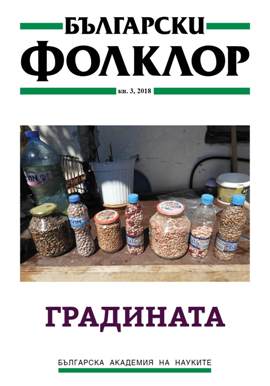
The paper deals with practices of vegetable gardening in the village of Mezdreya, Northwestern Bulgaria, before collectivization in 1958. The main question is how gardening affects social relations and, conversely, how getting into particular social relationships “makes” the garden. The interrelation between the plant world in gardens, the gardening practices, the economic interests of families, the social relations within and between families, people’s lifestyle, etc. have been studied. The article presents the interactions between families in the process of growing vegetables in irrigated gardens and in seed exchange, the association between neighbours and collective work in common benefit, the distribution of labour activities in the family by sex and age.
More...
The paper examines the process of transformation of plant species into emblems that play an important role in the construction of local identity and the specific taste of place. By comparing the case of Raduil and Smilyan beans, the authors seek answers to the questions: how a plant crop that has not been the subject of intense cultivation and extensive commercialization becomes a value and is permanently associated with the name of a settlement (area), how this happens in time, what are the main social actors in the process, which are the economic and socio-cultural preconditions, how the valorisation of certain local plant resources is expressed in cultural forms and can be an incentive for activating local communities and economic revival of the studied areas. The bio-cultural dimensions of beans in Smilyan and Raduil and the process of evaluation of these food plants are the main threads in the study.
More...
The article analyzes the specific urban agriculture practice of bio-gardening in schools, which continues the tradition of experimental and teaching plots in schools and combines the basic effects of urban agriculture: social, health-related, economic and ecological. Above all, this tradition illustrates the combined social benefits of urban agriculture related to education, upbringing, and social integration. The data presented in the article are drawn from the findings of research (in-depth interviews and focus groups) conducted in the framework of the project Urban Agriculture as a Strategy for Improving the Quality of Life of Urban Communities, financed by the National Research Fund. The data refer to bio-gardens in schools on the territory of Sofia Municipality.
More...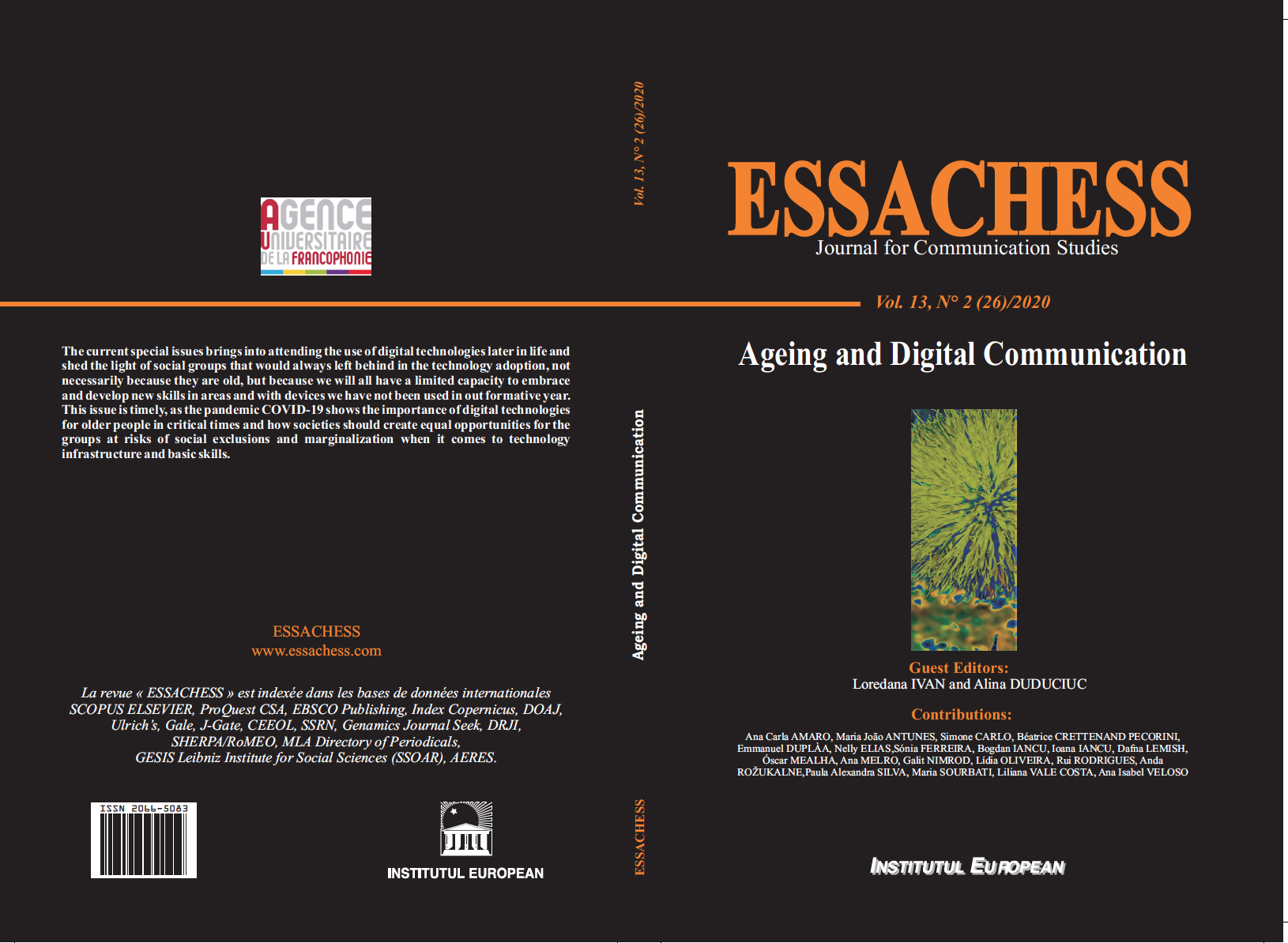
In the context of constant population aging, digital technologies are required especially for communication and geriatric care. However, before a large-scale deployment could be implemented, the general technological acceptance level should be assessed. The paper aims to descriptively analyze the perception of aging adults on mobile technology. Based on Technology Acceptance Model (TAM), the variables considered are emotional attachment on technology, actual use, perceived ease of use, perceived usefulness, and behavioral intentions. Methodologically, a set of semi-structured interviews have been conducted. The results show that although individuals love their mobile devices and although they perceive them as being useful, the devices are not easy to be used and there are numerous concerns regarding technology. Paradoxically, while they claim the like owning smart devices, they consider them too complex and intrusive.
More...
The increase of computer-mediated communication use and the aging population has led to a renewed interest in online communities and social networks for active aging and social support in daily living. However, a systematic understanding of the design recommendations in Senior Online Communities is still lacking in scientific documentation. The aim of this paper is to identify the design recommendations used in online communities that support active aging. In addition, this paper highlights some of the benefits of using online communities by older adults. Twenty-three papers published between January 2015 and May 2020 in English-language, peer-reviewed publications, met inclusion criteria. The review presents a set of recommendations for designing online communities to enhance older adults’ social interactions. A process that aims for “engagement” is suggested to strategically guide the design of Senior Online Communities: Interacting – Sense of Belonging (Role-playing, Storytelling, and Legacy) – Engaging.
More...
ociety is ageing at an unprecedented pace. In tandem, the number of technology-enabled solutions targeted at older adults continues to rise. It is therefore important to understand how to best communicate these solutions to seniors and facilitate use and adoption. To develop an understanding of what could be an improved strategy of communication and media content delivery for companies that provide older adults with technology-based solutions is the goal of this research. Aware of the potential stereotypes that may emerge towards the ageing population, this paper takes a special interest on ageism and gender to determine imbalances. With this in mind, this paper conducts an in-depth case study of the online presence of a company that developed a digital product for seniors that has been nominated for a Prize on Best Practice on Active and Healthy Ageing. Findings concerning the communication strategy of the company are extracted based on the analysis of their website and their five social media profiles. In total 120 posts were inspected, containing 120 text excerpts, 352 pictures, and 21 videos. Results show that the organisation sustains a continuous engagement with both seniors and the seniors’ organisations that use their product, privileging a relationship of close proximity. The representation of older adults is one that shows exceptionally happy and active seniors, who are surrounded by an aura of admiration. There seem to be no considerable differences with regards to gender.
More...
The question posed in the call “How the widespread of new technologies are changing the norms and practices of the later life?” was transformed in the main motivation to write the paper. LOCUS scientific research project addresses the subjects of Internet of Things, its impact in maintenaince and sustainability of Cultural Heritage and the important role of older generations to these operations. What the research team noticed is that sometimes it is the dissemination of technologies (and accompanying infrastructures) that promote their use and the creation of the need. And when the technologies do not exist, the infrastructures are compromised and/or nonexistent. It is considered that there is a before and an after period in the way in which the implementation of technological projects influences rural areas and older people. This also means that there is a high relevance in the second question of the call “How social actors, groups, institutions and mainstream media provide, spread or constrain ways of growing older via digital devices?” But also, a high importance of the project developed for the scientific knowledge advancement in the study areas (Communication, Technology, Sociology, Demography, Geography, etc.). The main conclusions of the paper are that digital technologies contributes to those Cultural Heritage maintenaince and sustainability, however, this is only possible with the mediation of oler people. Consequently, those people need to know or learn how to manage digital media and technology in order to contribute for the projects and technology development. Older people aim to participate in these projects and that also influences on their proficiency on technologies (on a win-win basis).
More...
Academic interests on the impact of media on individuals’ lives often highlight differences in knowledge across generations. The spread of disinformation and its potential impact on societies has added a new dimension to this process - the need to continuously improve media and information literacy (MIL). Thus, the older generations face greater challenges, as they need to acquire new skills more rapidly and on a larger scale. This article analyses interrelations between encouragement measures (implemented by media policy makers) and media literacy perception of middle-aged and older population in Latvia (aged 55 to 75). The research employs data of two national representative surveys (May 2019, 1017 respondents; August 2019, 1005 respondents) that include data on respondents’ perception of MIL and test their media literacy skills. The theoretical background of this paper is supported by literature that discusses age and generations in context of media and technology use (Aroldo, 2014), and the Ideological model of literacy (Street, 1984; 1994). Data shows that a higher proportion of middle-aged and older respondents, compared to other age groups, are not interested in MIL issues and evaluate their MIL competences as rather low, but in the everyday practice their ability to recognize and evaluate information is equivalent to that of other age groups.
More...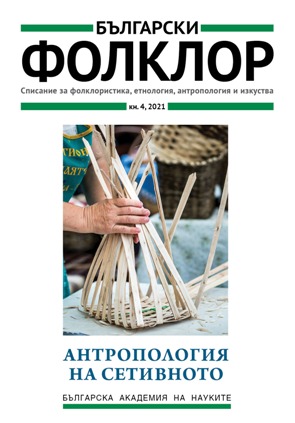
The paper describes the results from the research project “Sensory Ethnography of the City”. The authors discuss some aspects of the theoretical and practical models for the application of the sensory-ethnographic approach in urban studies. The focus of the study is on some multi-sensory aspects of the communication between people with disabilities and institutions. The field research in the framework of the project developed innovative methods, elaborated a theoretical model of the sensory aspects of the relationships between disabled people and institutions, and mapped the places where the citizens meet the administration. The final results of the project were a sensory exhibition, a conference, a book and a round table.
More...

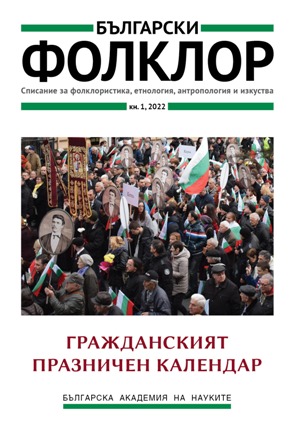
The holiday is an essential element in the ideological regulation of public life; it plays an important role in shaping and stabilizing the group celebrating it, in all cases by actualizing the most important unifying values, and very often – by distinguishing examples of exemplary behaviour. The spread of the COVID-19 epidemic at the very beginning of 2020 leads to a number of radical changes in social life. The speed with which processes develop, as well as the search for new forms to continue established practices, leads to experimentation with the possibilities of new technologies, as well as of new conditions – education in an online environment, online shopping, outsourced commercial cash registers for outdoor service, limiting the capacity for public access, reducing programs, etc. Limiting physical access to official celebrations provoked an attempt to compensate for it by broadcasting the festive ceremonies live. However, the transfer of an event to an online environment places local communities in the passive role of spectators of a performance, without the opportunity of participation, and the social function of the celebration is reduced to the possibilities of the social network to communicate through texts and chat with other representatives of the community who observe the broadcast. These restrictions seem to compromise the very idea of a celebration and make visible the fact that its fundamental feature is the possibility of physical presence and participation of citizens.
More...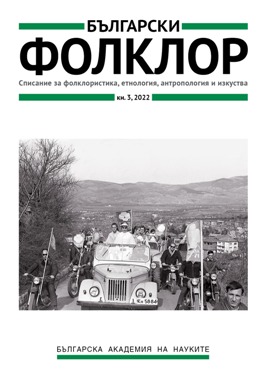
The subject of this text is the study of the ritual practice associated with summoning of demonic beings – Queen of Spades and Bloody Mary. The purpose of the text is to characterize the specific process of summoning ghosts, as well as to look for the prototypes of the considered female figures. The different conditions under which the sessions take place, their socio-historical context and the characters anchoring in popular culture, being its product, are compared. Attention is also paid to the social function of such practices, with an emphasis on their psychological interpretation. Queen of Spades and Bloody Mary are perceived as manifestations of fear, but at the same time, they are its antipodes, and the roots of this statement are sought in the initiation practices among adolescents associated with the transition to adulthood.
More...